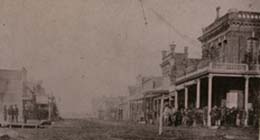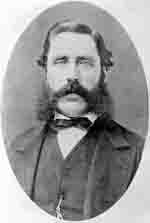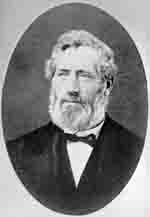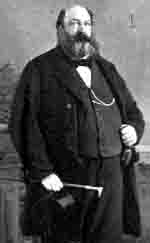
Victoria's Secret:
1859-1866
| The Dance Floor |
| Sexual History |
| Nightly Entertainment |
| Stakeholders |
| Local Halls |
| Original Sources |
| Citations |
| About Us |
| Political Players |
People:
Aims:
Methods:
Surprising SupportDance halls had the support of some surprising groups of people. Politicians and judges also had a vested interest in these establishments. Native women on the streets were considered social nuisances, so politicians tried to control their presence. These political figures had the power to control the enforcement of laws regarding dance hall operation. Getting these women off the streets at night, by moving them into dance houses or other locations, was a visible change politicians believed would gain them public support.* Police PowerInitially, the police magistrate had the authority to enforce laws that “prohibited Aboriginal people from remaining in Victoria after dusk.” Although there were arrests, this law was only “spasmodically” observed (JB 215). In fact, in June 1862 the Police Department ordered the expulsion of all Natives from the city except for “squaws who [were] living as the mistresses of white men”.* The people in control only wanted to clear the women who were directly problematic to their supporters, not the Natives sexually involved with the white men. Council ControlOn August 2, 1862, Victoria was officially incorporated as a city with a mayor and council in charge.* Council members considered permitting dance houses to operate because citizens did not want “unrefined” miners in their private clubs and these establishments removed Native women from the streets for part of the night.* Given the sensitive nature of the topic, however, council chose to defer the subject of dance halls to Mayor Thomas Harris who approved the licence on the condition that the dance hall was “located farther away from the town centre. " The increasingly negative tone of public attitudes towards dance halls eventually caused council to make the establishments susceptible to penalties for being public nuisances, despite the mayor’s approval of this form of entertainment for the miners. Political actions occurred on the basis of garnering public support, and targeting Native women in dance houses was a prime method of visibly showing control.*
|



